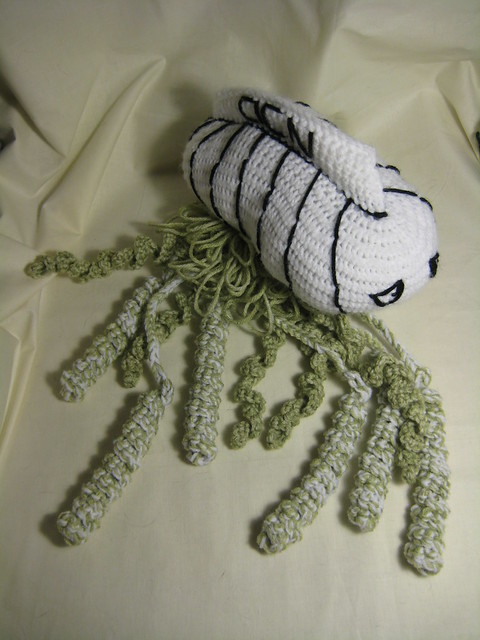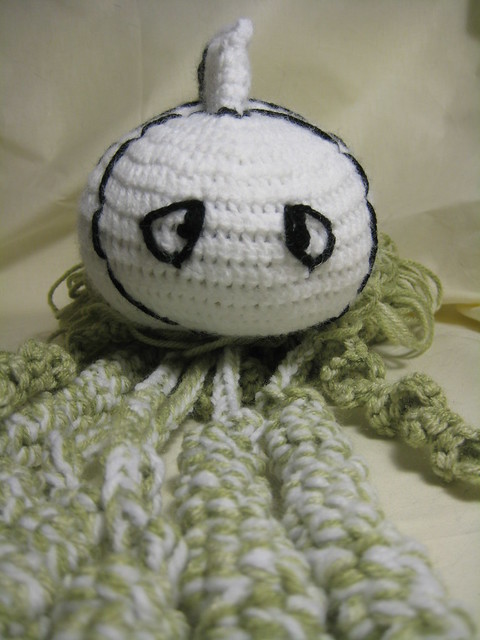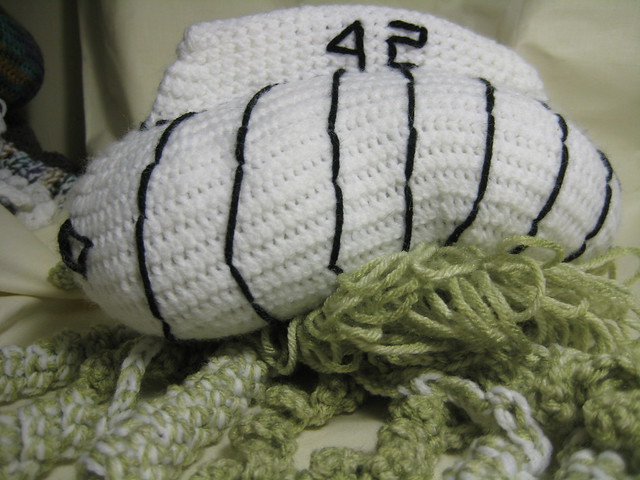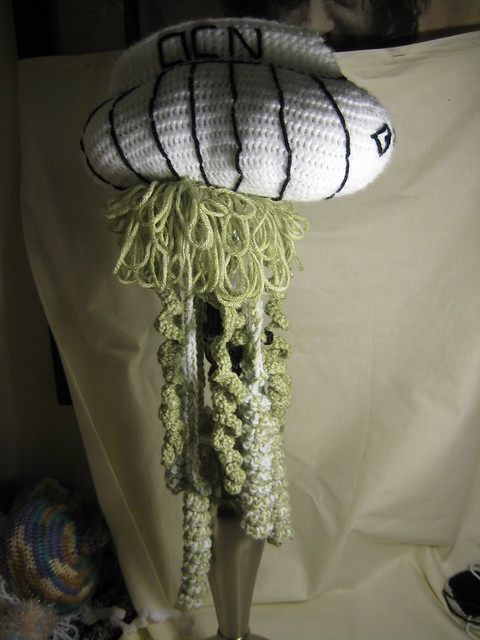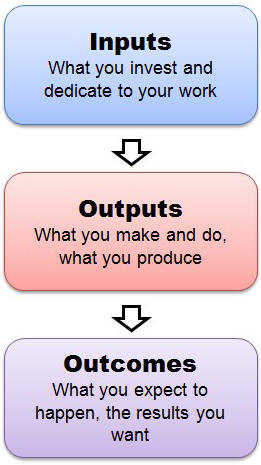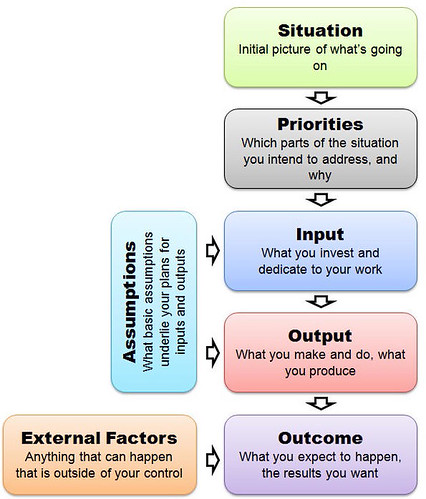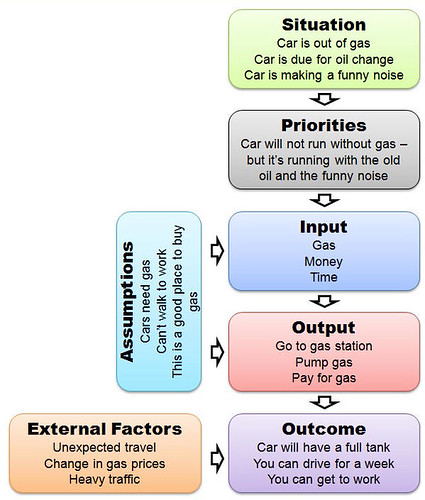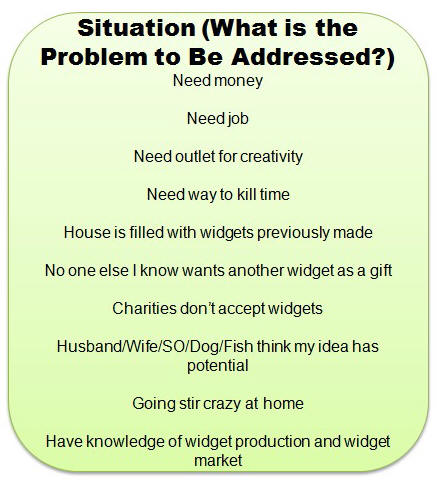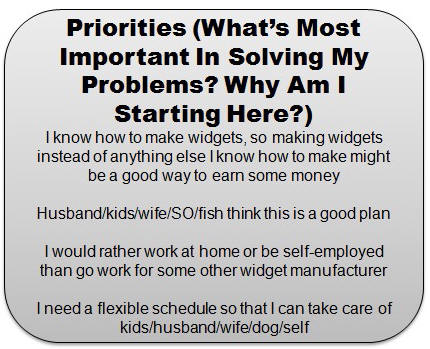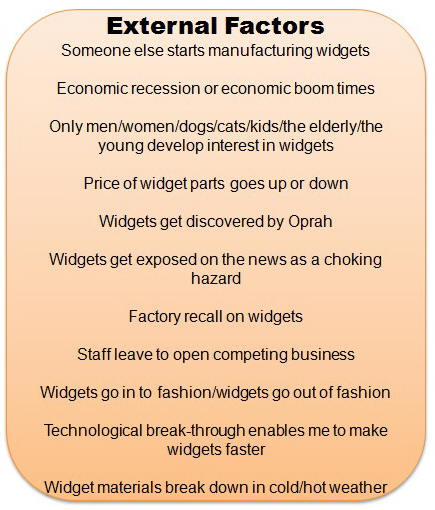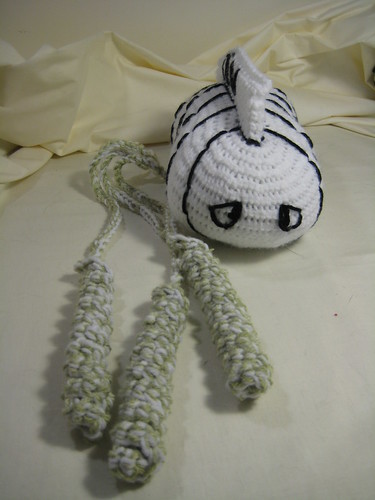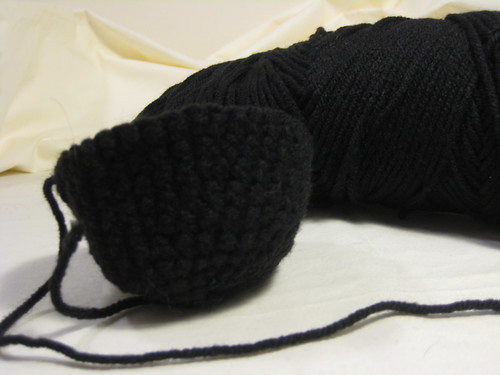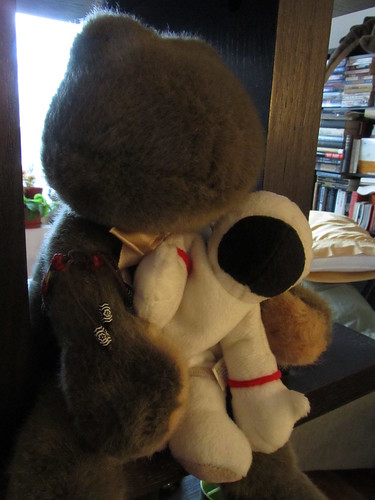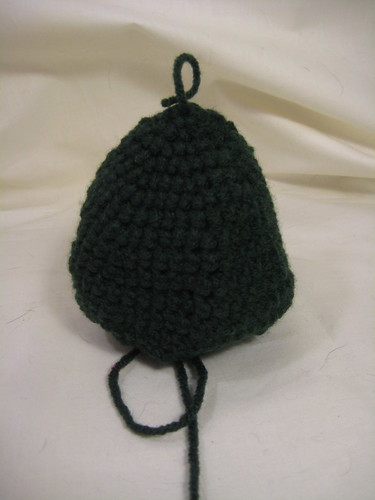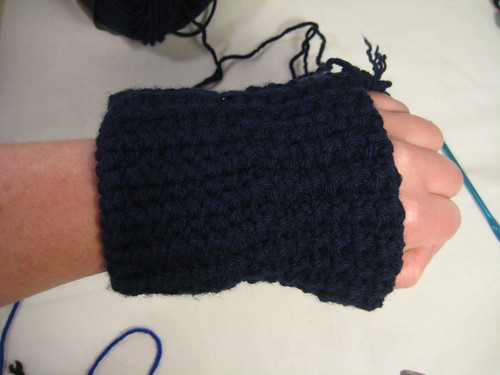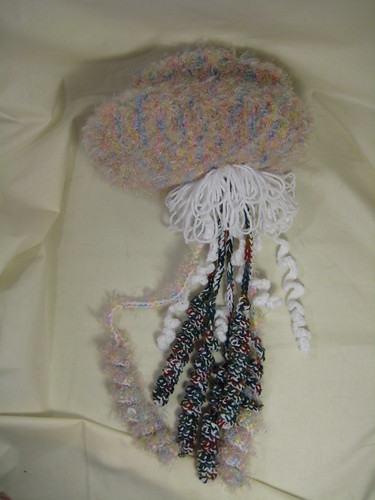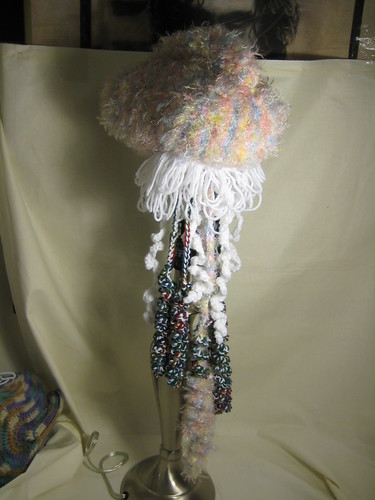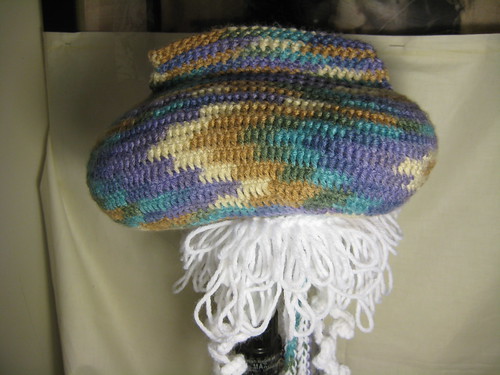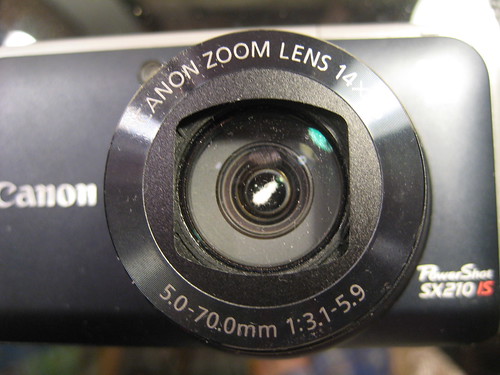What is a Goal?
Many of the things I've seen set as goals by my fellow crafters are excellent in every respect except for one - they are not goals, they are objectives. A goal is a mid-term or long-term outcome that you hope to achieve by engaging in a set of activities, such as those that would go in an "output" section in a logic model. Goals are frequently best described using words (rather than numbers), and should be achievable, specific, measurable, relevant, and based directly on what you are hoping to achieve and what activities you are engaging in as part of your business. I will go in to each of these items in the list below. Here are a few examples of goals - some of which I raided from my own list of goals for 2011 (though many of my goals for 2011 are actually objectives, too ;) ):
"Increase exposure for my business."
"Increase sales for my business."
"Turn a profit."
"Improve my product."
"Enhance my knowledge of my craft."
"Build a Web Presence."
How is a Goal Different from an Objective, a Performance Measure, or a Benchmark?
Now, I want to preface this by saying: I'm not suggesting you all run out and change your goals. If they are working for you, keep them in the form you have (provided they meet the other criteria below and in my next post, anyway ;) ) - in a lot of cases the differences between a goal and an objective, and between both of those and a benchmark, become negligible (and some sources I've seen call objectives goals, and say objective is another term for benchmark, just to make things even more confusing!). It's still worth while to at least understand the difference. Whereas goals are usually general and descriptive, objectives are where the real meat-and-potatoes come in. To take one example from the list above - if the goal is, "Turn a Profit," one objective related to this might be, "increase the range of products that I sell." Other objectives would list other specific, concrete activities that you intend to engage in that you think will enhance your ability to turn a profit. This is different again from a performance measure or benchmark. Performance measures are what you are specifically measuring in order to determine if you are meeting your objective, and they are often also called "benchmarks." Thus, a performance measure related to the "increase the range of products that I sell" might be, "I will publish at least one pattern a month." All goals should have at least one objective associated with them, and all objectives should have at least one performance measure associated with it, in which you demonstrate how you will measure your progress towards meeting the objective. I'll write more about this in a final post which will bring together all of this.
In short, goals are the big-picture aims that show the direction that you want to go. Objectives are how you intend to go about reaching those goals, and the performance measures are how you measure if you've done it.
Formative and Summative Goals
Okay, I'm going to get a little technical here for a moment. Bear with me. :) There are two basic types of evaluation activities. One type assesses the quality and effectiveness of process and addresses questions like:
"Have I done what I planned to do?"
"Have I made my product effectively/efficiently?"
"How can I improve my work process?"
This type of evaluation is called formative evaluation, and is concerned with processes, activities, basically everything that would fall under the "output" category of the logic model that I described on Thursday.
The second type of evaluation address outcomes, and answers questions like,
"Did I make as much money as I wanted to?"
"Did I produce as many units of my product as I wanted to?"
"Did I reach my target in sales/production/etc.?"
This type of evaluation is called summative evaluation, and is concerned with the extent to which specific achievement goals have been met within a pre-specified time frame. It's most closely related to the outcome part of the logic model.
A strong set of goals should include BOTH types, because you cannot really understand one without taking a look at the other. If you only have formative goals (from the above list, "improve my product," "build a web presence" or "enhance my knowledge of my craft" are examples), you don't end up with any idea of what the outcomes of improving your process have been. On the other hand, if you only have summative goals ("turn a profit" or "increase sales for my business" from the above list) then - whether you meet them or not - you don't end up with any clear idea of why you did or didn't hit them. However, by assessing both, and setting goals related to both, you are much more likely to have a clear idea of both how effective the changes you have made are, and why you did or didn't hit your goals for the year.
When you actually get down to it you'll often find that many of your goals have both summative and formative components. And that's fine. For example, "increase exposure for my business" might involve formative objectives ("maintain a blog") and summative objectives ("attend X craft fairs in a year").
Good Goals and Bad Goals
A "good" goal is one that is actually useful to you, providing you with guidance and inspiration and a target to aim for while running your company. A "bad" goal is one that drags you down, can't be achieved, causes you to waste time on non-priority tasks, or one that lacks relevance. When you are writing goals, if you think of a goal and cannot think of any way that you can go about reaching it, then it's probably a bad goal - or maybe you need some time to figure out just what you can do to meet it! For example, if you know that "increase the exposure of my business" is a goal that you want to reach, but you have no idea what activities to engage in to reach it, it's time to do some research and learn what behaviors you can engage in, and once you have, you can start setting objectives - perhaps "advertise on FB" or "create a mailing list" or "attend craft shows" or what not.
It's important to keep in mind that goals are about what you are doing. In the logic model, there is a category on external factors that might influence your output and outcomes. Never set a goal (or objective or performance measure) that only pertains to external factors, unless you are prepared to clearly delineate how you intend to address it. "Increase sales" is only a good goal if you can list activities you will engage in that will bring it about; if you just list "increase sales" as a goal without any associated changes in your behavior, it's a terrible goal, because unless you act, it's highly unlikely that your sales will just go up.
Here's an overview of some of the most important things to keep in mind when writing good goals:
1. Set specific goals.
A list of goals with some specificity will be of the most use to you. "Improve my business" might sound like a good goal, but it's so general that it encompasses pretty much every type of activity that you might engage in as a business owner, while telling you nothing about what you actually intend to do. All of us know some specifics of how we want to improve our businesses, based on our own situations. Those specifics make much better goals. Maybe you have a great product that no one knows about, then you should think about a goal related to advertising or exposure. Or maybe you've got all the attention you could want, but you've got a small product range that your audience is already familiar with - in which case it's time to think about goals related to improving your skills, expanding your range of production, or innovating in to new areas. The more closely aligned your goals are with what you are actually trying to achieve, the easier it will be for you to think of useful objectives (which, remember, describe what activities you'll do to reach your goals).
2. Set relevant goals.
Make sure that your goals matter, and are actually related to what you do. I know this may sound obvious, but I've seen a shocking number of instances in goal lists of goals that are only tangential to the actual activities that are being engaged in. For example, if you primarily intend to engage in activities related to marketing and outreach, setting high goals related to production might not be your best bet. You can't do it all. (that's a mantra, I'll be saying it a lot in these descriptions ;) )
3. Set goals based on your priorities.
Directly following from the previous item on the list, it's critical that you relate your goals to what your actual priorities are. If you don't, you'll just end up running yourself ragged trying to meet goals that have become disconnected from what you are actually trying to achieve. If your priority is to make a little money on the side while raising your family, don't set ambitious goals for profit that mean that you're going to have to work your tail off. If your priority is to become the best at your craft, remember that education and learning take time, so maybe you should scale back on the goals related to production to ensure that you have plenty of time to learn and practice and improve.
4. Set achievable goals.
You cannot do it all. You cannot do it all at once. All good sets of goals should have a time period associated with them (often a year for our business, though in my job it's often 3 or 5 years). Keeping in mind every single type of thing you really have to do in a year, don't set goals that you can't reach. They won't do you a lick of good, and they'll make you feel bad to boot. This is NOT to say that you shouldn't set ambitious goals, and finding the balance can really be hard - but it's critical to be honest with yourself when you set goals. Set the bar high enough that you'll have to work for it, but low enough that you've got a better than 50% chance of getting there, and you'll end up doing your best with a reasonable chance of getting that happy glow from achievement.
5. Set measurable goals.
A goal that you can't tell if you've hit it is of no use what-so-ever. "Get noticed by a publisher" would be an excellent example of this kind of goal. Sure, that'd be awesome, but how on earth are you going to know if you've been "noticed?" It's totally meaningless, for one, and completely impossible to measure, for another. A better goal would be, "be published" - while it's still relates to things partially outside of your control, you can easily delineate a list of objectives (activities) that you'll be able to engage in that will increase the likelihood of this happening.
6. Set goals based on the activities that make up your business.
Setting a goal based on external factors you can't control isn't helpful at all. Building on the last example, "be approached by a publisher this year" is another way to phrase the situation, but depends entirely on external agency - a publisher to find you and want to publish you. Then you are right back where you started - completely unable to assess the extent to which this goal has been met, and at a loss as to how to bring about a situation where a publisher would come to you. In the end, goals are about you and your business and what you do, and how those activities influence others.
7. Goals should not be "yes" or "no" items.
Performance measures and objectives can be yes or no items. You either raise your prices or you don't. You either engage in self-education, or you don't. A goal should never be an activity you either do or don't do. If that's the form your over-arching goals have taken, you're thinking too small and have mixed up the levels. Goals are the big picture things. Raising prices might be one way of turning a profit, but in the end the profit is the goal, the price raising is just an activity you engage in to reach that goal.
8. Good goals aren't the same for everyone!
Don't think your list of goals has to look like every one else's. Maybe, based on your current priorities and situation in life, "scale back my business" is a realistic, reasonable goal. Don't be afraid of that, even though most other business you see will be going in the exact opposite direction. Goals, as I keep saying, are about what you want for your business, based on your own situation, and on what you yourself are doing.
9. Set a limited number of goals.
Repeat it with me: you can't do it all. A good list of goals shouldn't have too many items on it (I'd give a number, but in truth what's reasonable depends on your other obligations - but I'd say if you're hitting over 10 you've probably got too many). If you've de-prioritized something to such an extent that you can only give a very small amount of your time to it, don't make it a goal - since you probably won't be able to do it anyway. Save it for the "long term outcomes" part of your list (remember your logic model!), and keep it for the future, but focus your goals on the short- and medium-term. Give it enough time, and keep chipping away at the things in reach, and the others will eventually come within reach.
10. Don't be afraid to revise your goals.
Things change. Life changes. Situations change. Maybe you got laid off from your day job and need to step it up. Maybe you actually did get discovered by a publisher and went from obscurity to fame over night. Maybe you took stock mid-year and realized that you set the bar way too high - or way too low. Goals aren't set in stone. They are only relevant so long as they are helpful to you, and provide you with support in implementing your business. The instant they cease to be helpful, or become a burden, is the moment when you should consider stepping back and reassessing them. Even a list of goals that starts out "good" can end up being terrible if they become a burden to you.
So. That's a whole, whole lot. I know. You've finished the bulk of it! If you think you've got it, feel free to stop here. However, if you'd like to see it grounded a bit in specifics, I'm going to finish the post off by focusing once again on Widget Co., the hypothetical start-up company that I created for the Logic Model post. Let's take a look again at Widget Co.'s hoped-for short-term and long-term outcomes.
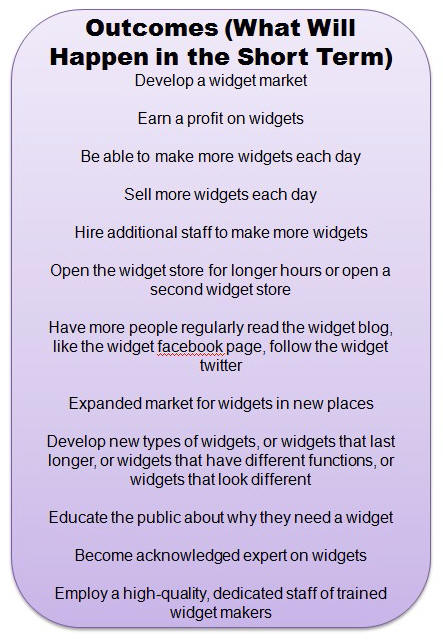

As CEO of Widget Co. I've set my sights on a lot of different areas at once. Some of the things I've listed as outcomes are goals; others are more like objectives - remembering that the distinction is that objectives are activities we engage in, whereas goals are over-arching purposes. And again, these lines get fuzzy, but here's how I would classify the list.
Short Term Outcomes:
1. Develop a widget market: goal. This is broad, but there are a lot of activities that I can engage in to try to reach it. However, narrowing it might be better, as in the below list there end up being many items that are facets of this.
2. Earn a profit on widgets: goal.
3. Be able to make more widgets each day: goal. There are various production-related activities that relate to this.
4. Sell more widgets each day: could be a goal or an objective, but not a very good one. Also, somewhat repetitive with earn a profit - obviously we have to do this to earn a profit.
5. Hire additional staff to make more widgets: objective. This is a way of making more widgets each day.
6. Open the widget store for longer hours or open a second widget store: objective. This is a way of turning a profit and expanding the widget market.
7. Have more people regularly read the widget blog...: objective. This is a way of developing a widget market.
8. Expand market for widgets in new places: goal, but repetitive with item 1.
9. Develop new types of widgets: goal, but one that will require a great deal of thought to figure out how I actually intend to go about doing this.
10. Educate the public about why need a widget: goal, repetitive, a facet of item 1.
11. Become acknowledge expert on widgets: goal, but problematic. How will you know if you are acknowledged? Better to focus on self-education and leave the acknowledgment to posterity.
12. Employ a high-quality, dedicated staff: this is a good, specific goal, much better than item 5, where you just hire them. Repetitive with the other.
Long-Term Outcomes
Pretty much all of the long-term outcomes are problematic to one extent or another. While the first three are perhaps reasonable, and can be measurable, two of the three are really more like objectives to set for success once you've gotten far enough. The fourth (monopolize the widget market) is illegal, and the fifth (world domination) is likely unachievable. While these kinds of ambitions might be our ultimate dreams, there is a big difference between a dream and a goal. If you can't really figure out a reasonable sequence of activities that you can engage in that will enable you to reach the goal, it's probably too big - even for the long term. This isn't to say that you shouldn't have dreams - on the contrary, dream away, please! - but keep in mind that dreams are separate from your business, and you'll be helping yourself out if you keep each step within reach (even if it's distant reach) of your current situation - and then through successive small steps, reach those dreams one step at a time instead of staring at "make millions" on the day you open your doors to the public and wonder how on earth you'll ever do that. Start with "make hundreds," step up to "make thousands," and if you keep it up, who knows, maybe you can get there!
Based on everything that Widget Co. does, and these outcomes, lets set them some reasonable, achievable goals linked to their priorities and the activities that they engage in...
1. Earn a profit on widgets.
2. Improve the production process for widgets.
3. Self-educate on the production, development, types, competition, and other facets of the widget business.
4. Maintain various advertising activities for Widget Co.
Evaluation 101 series:
1. Logic Models
2. Goal Setting
3. Writing Objectives
4. Performance Measures for Dummies
5. Bringing it All Together
